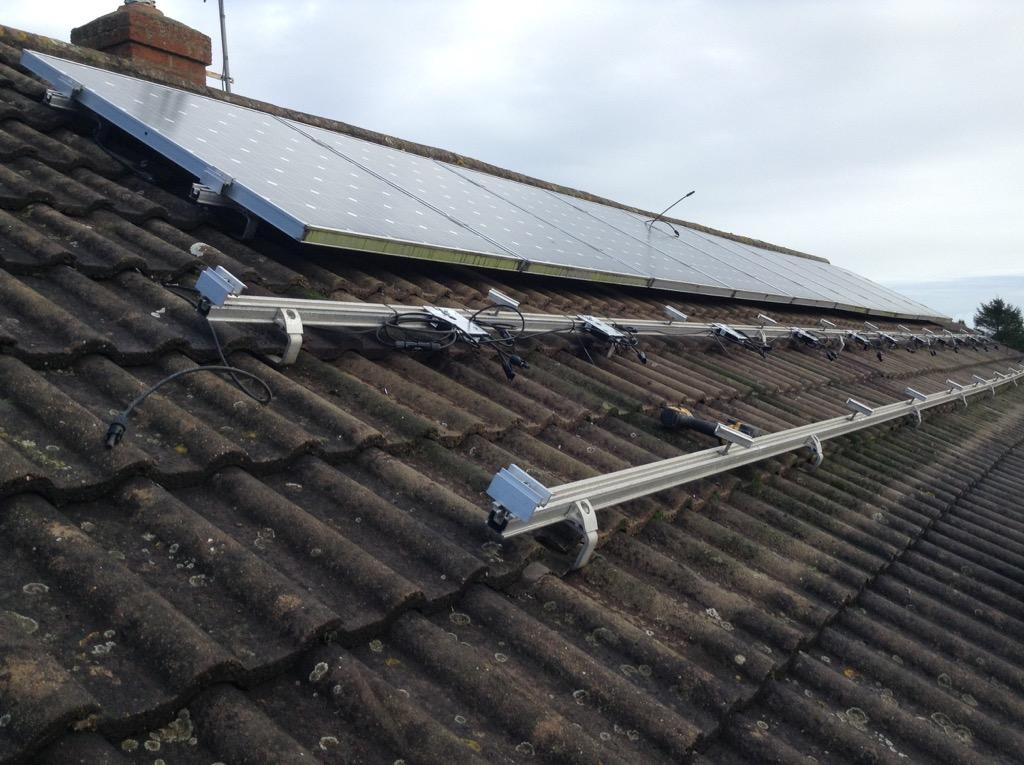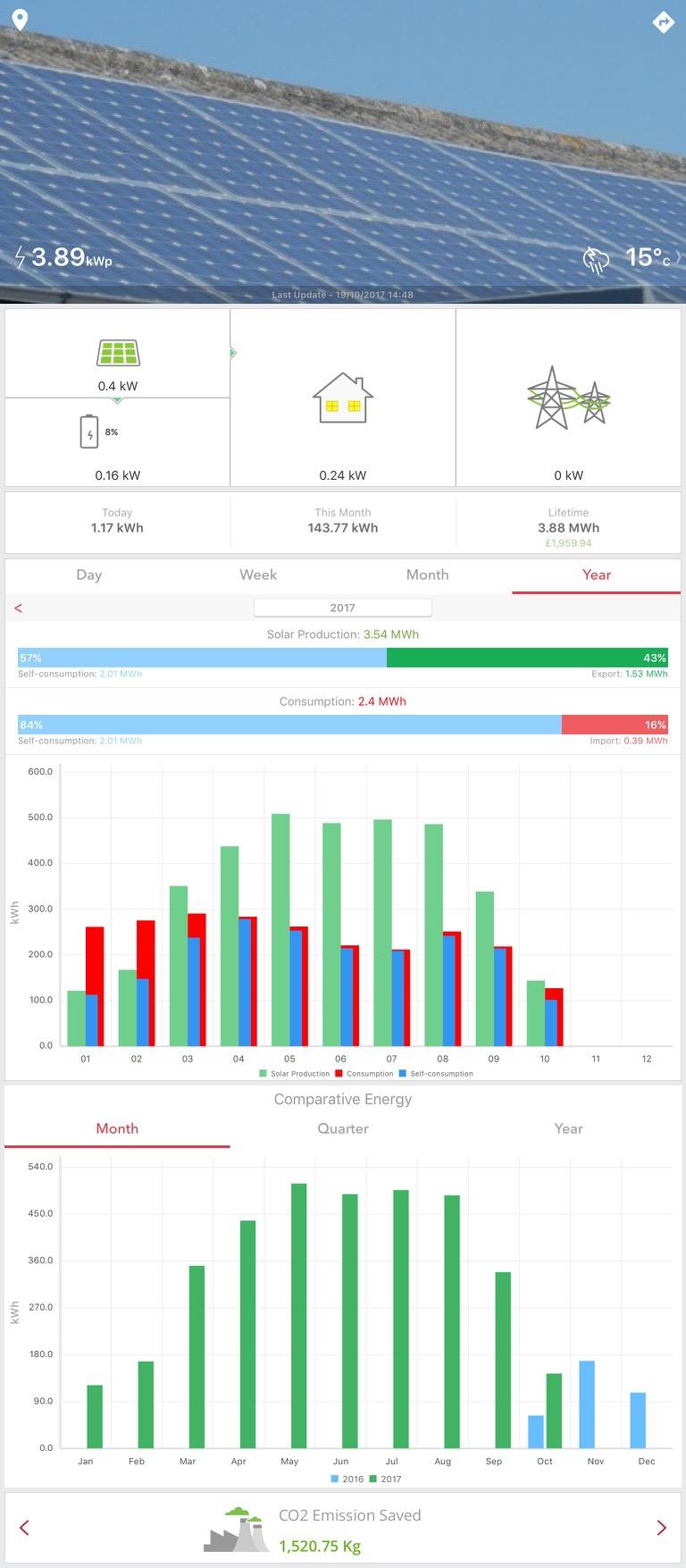Following another round of inverter issues, and generation meter misbehaviour I decided to actively investigate on–site battery storage.
Settling on a DC–coupled* Tesla Powerwall (their curvy first version) with a SolarEdge inverter.
(* Trying to reduce round–trip power losses due to rectification (AC—DC‡) and inversion (DC—AC). Powerwall 2 is AC–coupled for many reasons.)

These and an optimiser per PV (photovoltaic) panel† were fitted over two days around this time last year (October 2016).

(† There are 21 185W (Watt) Sharp panels, originally fitted August 2011. The original system is at least 80% paid off, not counting bill reduction(s).)
The result being: more use of electricity generated by photonic interactions with silicon wafers. (Some science.)

The upshot of this: many days’ nighttime usage covered by battery capacity (≤6.4kWh), negligible grid import, and bills where standing charge dwarfs unit expenditure.
e.g. “… for the period 29 June 2017 to 28 September 2017
- 12 units (1kWh kilowatt hour)
- 15.11p ex 5% VAT = 1.81 ex 5% VAT (value–added tax.)
- 92 days’ standing charge
- 30.87p ex 5% VAT = 28.40 ex 5% VAT
”
With the higher–level FIT (feed–in tariff), the 3.8+MWh generated over the year (translated to money in the bank) has been enough to pay those bills, and more…
[‡ no, not AC/DC.]




